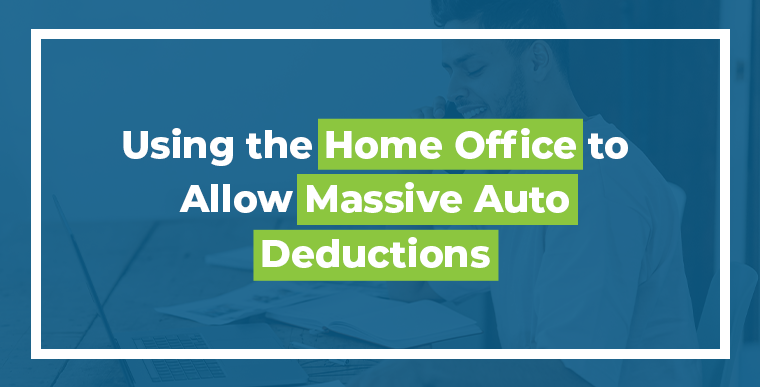One of the most highly audited business deductions is the auto expense. The regulations require documentation of every trip taken by car and justification that it is a business expense. If you opt to take the direct expenses method, you could accelerate the depreciation of a large SUV and get a massive business write-off. However, the write-off is only to the extent that the vehicle is used for business.
Many business owners, like most Americans, do the majority of their driving between home and the office. The trip between home and the office is considered commuting miles and they are specifically excluded from being taken as a business deduction. However, if the drive from your home to the office is a trip between two work locations, it is a valid business trip.
In a previous article, we talked about the fact that the home office needs to be exclusively used for business. So how do we make your home a business location, even if you do not have the space to dedicate to a home office.
There are 3 key points that set the stage for using a tiny 1 square foot spot in your home as a home office unlocking massive auto expense deductions!
- No Walls Needed
- Break for Small Homes – “de minimis”
- The 1 square foot office
No walls needed – Although the area must be exclusively used for business, it does not need to be a separate room, nor does it need to be partitioned off.
The IRS and the tax courts have allowed office space where the personal use is “de minimis” this means that the office can have an area where you walk through for personal use. For example, in Hughes v. Commissioner the court allowed a walk-through closet to be a home office even though the taxpayer had to walk-through the office to get to his bedroom.
Don’t be tempted to stretch the meaning of de minimis though. The IRS and the tax courts have specifically denied storage of personal items and occasionally hosting family meals as de minimis.
Here is how to create the 1 square foot office: Buy a storage cabinet or filing cabinet that extends all the way to the floor. Use it to store business items only, such as business files and business supplies. When you perform work at home, pull a chair and a table or desk next to the cabinet and perform your work. When you are done, you can put the table or desk and the chair back. Claim only the space for the cabinet. This will not create big deductions for the home office itself but will unlock big deductions for your auto expenses.
Last week, we covered what type of work deems the home office a valid office, make sure that you follow those guidelines, so it qualifies.
As you can see from this 3-part series of articles, something as simple as the home office deduction is actually quite complex and can have a significant amount of untapped benefits.
I encourage you to consult a tax professional such as myself so that you do not end up paying more than your lowest required amount in taxes.



